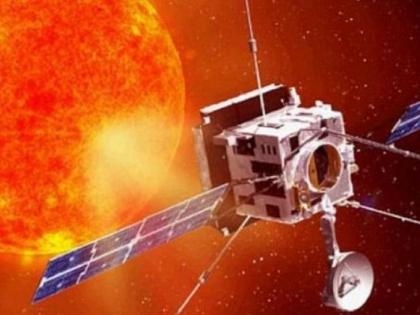All you need to know about Aditya -L1 solar mission
By Lokmat English Desk | Updated: August 30, 2023 15:45 IST2023-08-30T15:44:10+5:302023-08-30T15:45:04+5:30
The Indian Space Research Organisation (ISRO) recently announced that Aditya-L1- India's first space-based observatory to study the Sun- will ...

All you need to know about Aditya -L1 solar mission
The Indian Space Research Organisation (ISRO) recently announced that Aditya-L1- India's first space-based observatory to study the Sun- will be launched on Saturday (September 2) at 11.50am from Andhra Pradesh's Sriharikota. The Aditya-L1 mission will be launched by ISRO's PSLV XL rocket from Satish Dhawan Space Centre SHAR (SDSC-SHAR), Sriharikota. Initially, the spacecraft will be placed in a Low Earth Orbit. Subsequently, the orbit will be made more elliptical and later the spacecraft will be launched towards the Lagrange point (L1) by using onboard propulsion. As the spacecraft travels towards L1, it will exit the Earths' gravitational Sphere of Influence (SOI). After exit from SOI, the cruise phase will start and subsequently the spacecraft will be injected into a large halo orbit around L1. The total travel time from launch to L1 would take about four months for Aditya-L1.
How to watch Aditya-L1 from launch centre?
Sharing the launch date and timing, ISRO also invited citizens to witness the historic event live from the space centre at Sriharikota. The space agency shared a link for registration to view the programme from the Launch View Gallery. Click here for registration.The registration will be open tentatively from Tuesday (August 29) 12pm.
Objectives of the Aditya-L1 Mission
The spacecraft will carry seven payloads to study the photosphere, chromosphere, and the outermost layers of the Sun (the corona) using electromagnetic, particle, & magnetic field detectors. As outlined by ISRO, the Aditya-L1 solar mission will complete the following scientific objectives:
Study the upper atmospheric layers, the Chromosphere, and the Corona of the Sun.
Study of chromospheric and coronal heating, physics of the partially ionized plasma, initiation of the coronal mass ejections, and flares.
The physics of the heating mechanism of the solar corona.
Observe the in-situ particle and plasma environment to gather data that will facilitate the study of particle dynamics from the Sun.
To collect diagnostics of the coronal and coronal loops plasma (temperature, velocity, and density), and more.
How different is Aditya-L1 Mission
With being the debut solar mission for India, the Aditya-L1 is also unique in several ways. As mentioned by ISRO, the following aspects of the Aditya-L1 will make it one of its kind:
First-time spatially resolved solar disk in the near UV band.
Study the CME dynamics close to the solar disk (~ from 1.05 solar radius) to provide information on the acceleration regime of CME, which is not observed consistently.
Onboard intelligence to detect CMEs and solar flares for optimized observation and data volume.
Using multi-directional observation to understand the anisotropy of solar wind.